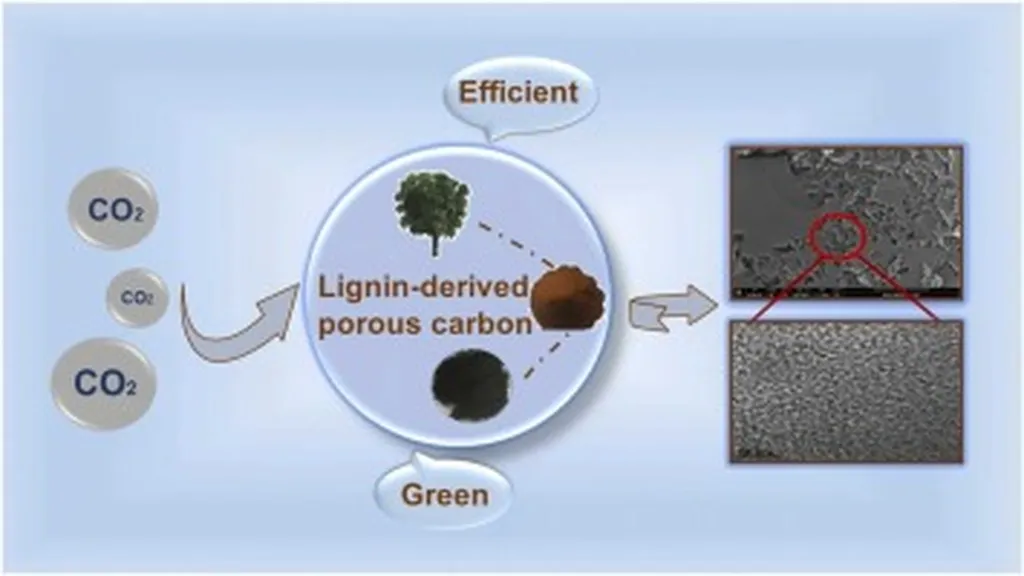In a significant stride towards sustainable carbon capture, researchers have developed a novel, low-cost porous carbon material derived from lignin waste, demonstrating exceptional CO2 adsorption capabilities. This breakthrough, published in the journal *Achievements in Engineering*, could reshape the energy sector’s approach to carbon abatement and circular economy practices.
The study, led by Changle Wang from the Center for Carbon-Neutrality Catalysis and Engineering at Shenzhen Polytechnic University, presents a one-step direct activation/carbonization method to convert abundant lignin waste into high-performance CO2 adsorbents. The optimal material, dubbed L-K-2–750, showcased a remarkable CO2 adsorption capacity of 3.75 mmol/g at 25 °C and 1 bar, rivaling or surpassing existing adsorbents reported in the literature.
“This material not only exhibits high CO2 capture capacity but also demonstrates excellent stability and selectivity,” Wang explained. “The isosteric heat of adsorption levels indicate low regeneration energy, making it highly promising for practical applications.”
The research highlights the potential of lignin, a byproduct of paper and biorefinery industries, as a valuable resource for carbon capture. The direct activation/carbonization method simplifies the production process, reducing costs and environmental impact. The material’s stability over five adsorption/desorption cycles, with less than 2% loss in adsorption capacity, underscores its durability and potential for long-term use.
The energy sector stands to benefit significantly from this innovation. As industries worldwide grapple with the need to reduce carbon emissions, efficient and cost-effective CO2 capture technologies become increasingly vital. The high CO2/N2 selectivity of 57.2 in a CO2/N2 mixture (15:85) further enhances the material’s appeal for industrial applications.
“This research opens up new avenues for developing sustainable and economical carbon capture solutions,” said a senior energy analyst reviewing the study. “The use of lignin waste not only addresses environmental concerns but also aligns with the principles of a circular economy.”
The findings could accelerate the adoption of carbon capture technologies in power plants, industrial facilities, and other emission-intensive sectors. By converting CO2 into a valuable resource, this innovation supports the transition towards a carbon-neutral economy.
As the world continues to seek sustainable solutions to combat climate change, the development of low-cost, high-performance CO2 adsorbents from lignin waste represents a significant step forward. The research by Wang and his team not only advances the field of carbon capture but also highlights the importance of innovative materials science in addressing global energy challenges.

